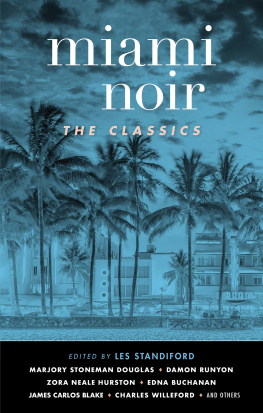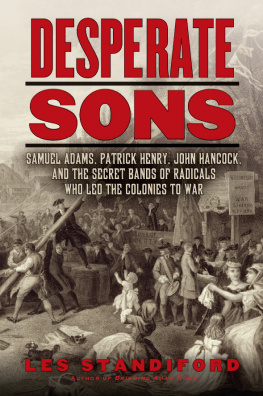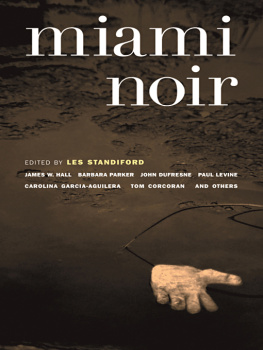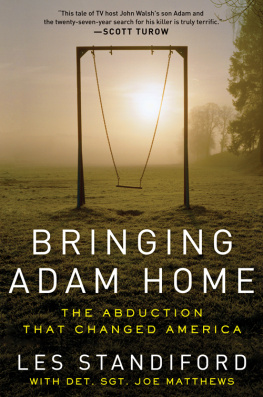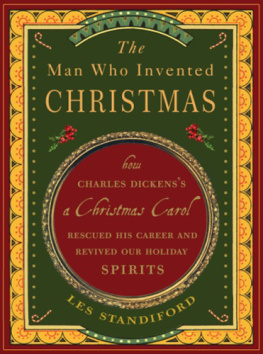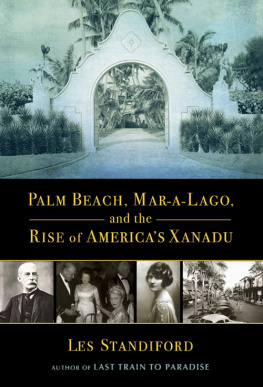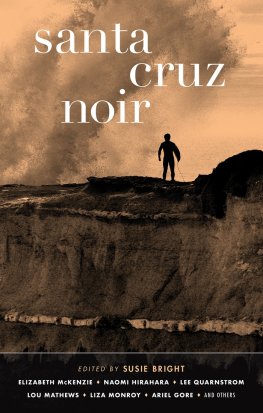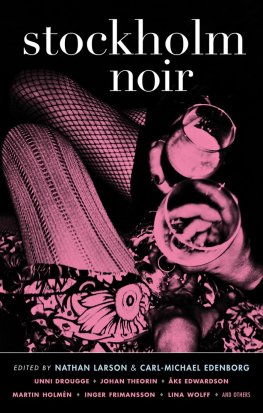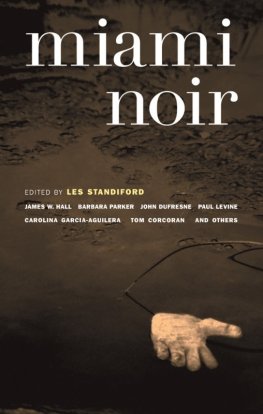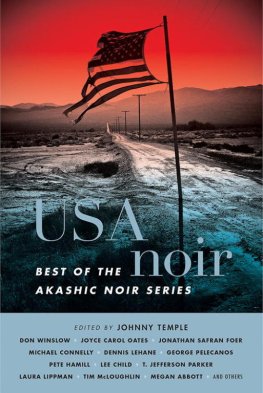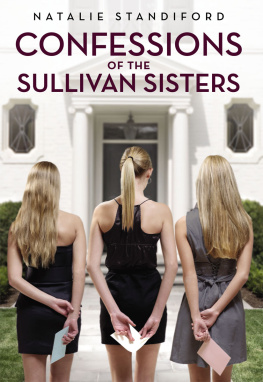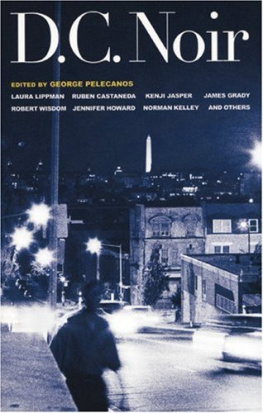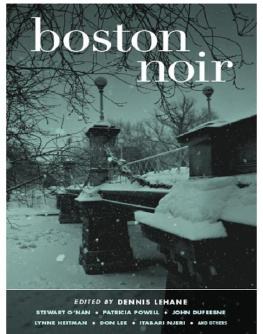Les Standiford - Miami Noir
Here you can read online Les Standiford - Miami Noir full text of the book (entire story) in english for free. Download pdf and epub, get meaning, cover and reviews about this ebook. year: 2020, publisher: Akashic Books, genre: Detective and thriller. Description of the work, (preface) as well as reviews are available. Best literature library LitArk.com created for fans of good reading and offers a wide selection of genres:
Romance novel
Science fiction
Adventure
Detective
Science
History
Home and family
Prose
Art
Politics
Computer
Non-fiction
Religion
Business
Children
Humor
Choose a favorite category and find really read worthwhile books. Enjoy immersion in the world of imagination, feel the emotions of the characters or learn something new for yourself, make an fascinating discovery.
- Book:Miami Noir
- Author:
- Publisher:Akashic Books
- Genre:
- Year:2020
- Rating:4 / 5
- Favourites:Add to favourites
- Your mark:
- 80
- 1
- 2
- 3
- 4
- 5
Miami Noir: summary, description and annotation
We offer to read an annotation, description, summary or preface (depends on what the author of the book "Miami Noir" wrote himself). If you haven't found the necessary information about the book — write in the comments, we will try to find it.
Miami Noir — read online for free the complete book (whole text) full work
Below is the text of the book, divided by pages. System saving the place of the last page read, allows you to conveniently read the book "Miami Noir" online for free, without having to search again every time where you left off. Put a bookmark, and you can go to the page where you finished reading at any time.
Font size:
Interval:
Bookmark:


Introduction
Long on Beauty, Short on Rectitude
When I wrote the introduction to the original Miami Noir in 2007, I spoke of the relative youth of the city, barely more than one century and one decade old at the time, and of the appropriate fact of the irascible crime story as its reigning literary emblem. There might come a day, I theorized, when Miamihaving acquired its art and science museums, and its thriving opera house and shimmering performing arts centerswould have developed the ease and the multifaceted cultural and historical backdrop from which reserved and careful works exhibiting the decorum of literature some purists denote with a capital L might be spawned.
But, said I, Miami remained at the time essentially a frontier town, a city on the edge of the continent, inviting all comers, full of fractious delight, where nothing of import had been settled, where no special interest group could yet claim control of politics or culture, and every day brought a new melee between some subset of those on the make and destined for collision. The perfect literary medium to give voice to such a place, I ventured, was the story of crime and punishment.
As I write today, despite the fact that Miami has in the past decade-plus added a downtown performing arts complex to outdo all but the Kennedy Center in DC, a jaw-dropping art museum by the Biscayne Bay, an exemplary science museum, the establishment of the world-renowned Art Basel festival on Miami Beach, and so much more, I am sticking to my metaphorical guns: the operative literary form to portray Miamithe essential aria of the Magic Cityis spun from threads of mystery and yearning and darkness.
The lure of Miami remains to this day essentially what it was when Ponce de Len and his men crossed the Atlantic in search of streets paved with gold and glistening with waters that spilled over from a fountain of youth. By the thousands, each year, they still comeimmigrants, retirees, high rollers, jokers and midnight tokers, by yacht, by raft, by RV, by thumball in search of one or another version of the same impossible promise. Who would expect a series of drawing room comedies to emerge from such a scene?
And here is one more consideration: when terrible things threaten in some ominous neighborhoods, in some tough cities, a reader of a story set in those locales might be forgiven for expecting the worst; but when calamity takes place against the backdrop of paradise, as we have here in Miami, the impact is all the greater.
And yet with all that said, when Johnny Temple from Akashic Books first proposed a second volume of Miami Noir, I was doubtful. The sequel was to be subtitled The Classics, Johnny explained. Unlike the first collection, which invited original stories from a set of working Miami writers, this was to be a collection of previously published stories in the genre, one to give a sense of how the story of crime and punishment had developed along with the history of the place.
But we dont have a history, I protested to Johnny. At least not one that includes much story publishing, let alone noir publishing.
I dont believe it, was the essence of Johnnys response. Go to work and get back to me when youve got something.
Though I thought there was about as much possibility as me coming up with a volume of Des Moines Noir, I took Johnny at his word and began the search. Having penned a series of crime thrillers of my own featuring the travails of honest (!) Miami building contractor John Deal, I was familiar with the work of the so-called Miami School of crime writers who came to attention in the eighties and nineties, including Charles Willeford, Elmore Leonard, Carl Hiaasen, James W. Hall, James Grippando, Barbara Parker, and so many others. But most of us were writing novels, the paying markets for short crime and mystery fiction having shrunk to relatively nothing by the time.
Furthermore, prior to that great flowering that came with such titles as Miami Blues and Stick and Strip Tease, Miami was simply not much of a writers town, let alone a mystery writers town. John D. MacDonald had of course immortalized fictional South Florida detective Travis McGee in a series of twenty-one novels published from 1964 to 1985, but McGee operated out of his houseboat The Busted Flush, docked thirty miles up the road at the Bahia Mar marina in Fort Lauderdale, and while MacDonald produced a few short stories set in various South Florida locations, none were set in Miami.
I by chance learned of the work of Douglas Fairbairn back in the early 1980s shortly after I arrived in Miami, when his niece, playwright Susan Westfall, put me onto his matchless thriller, Street 8, which tells the story of used-car dealer Bobby Mead and his ill-fated run-in with a group of Cuban expatriates looking for a warehouse in which to store munitions destined for a Bay of Pigsstyled invasion. I found the book astonishingin my view the very prototype of nearly all the best Miami crime novels that have followedand even though Fairbairn, who fell victim to early onset dementia, never wrote another piece of Miami-based fiction, much of Street 8 (Fairbairns original title was Calle Ocho but his publishers complained that English-speaking readers would be puzzled and leaned on the author to come up with an alternate title) is told episodically, enabling me to convince Johnny to include an excerpt of this very important work.
In fact, it was that decision which came to form the philosophical cornerstone for this collection, something of the opposite of the original intention. Here is what I mean: while there may be something of an overview of the development of the Miami crime story over the past century to be found in these pages, I think there is a much greater cogency to be found in the overview of the history of a most unusual and distinctive place reflected here. Furthermore, that sense of history is delivered with none of the typically dusty overtones of an all-too-often dry and arcane subject, given that at the forefront of nearly all the tales are questions of life or death.
The Fairbairn material would be the perfect linchpin between the past and the contemporary crime writers, I reasoned, as I set out in earnest on my search for what had come before. I could only hope that there were short stories to be found to illustrate the point.
As I detailed in the introduction to the original Miami Noir, there have been a number of early crime novels set in Miami, including Kid Galahad (1936) by Francis Wallace, about mob-influenced boxing; Leslie Charteriss The Saint in Miami (1940), an installment in the British series; and several Brett Hallidaypenned Mike Shayne novels of the forties and fifties, with Shayne operating as pretty much the lone capable moral force in a tropical landscape long on beauty but short on rectitude.
The Brett Halliday moniker was in fact only one pen name employed by Davis Dresser, who (while spending much of his time in Santa Barbara) wrote dozens of novels of all stripes, but, as it turns out, nary a single short story to be found set in Miami, with the exception of the bordering-on-novella-length piece included in this volume, A Taste for Cognac, originally published in Black Mask magazine in 1944. In fact, the story was later published as a stand-alone dime novel in 1951 and bundled with another story/novella, Dead Mans Diary, as a kind of omnibus in 1959. While it may test the limit of what can be termed a short story, the piece is not only relatively compact, it contains the usual tropes and carries the blunt force typical of a Shayne novel.
Next pageFont size:
Interval:
Bookmark:
Similar books «Miami Noir»
Look at similar books to Miami Noir. We have selected literature similar in name and meaning in the hope of providing readers with more options to find new, interesting, not yet read works.
Discussion, reviews of the book Miami Noir and just readers' own opinions. Leave your comments, write what you think about the work, its meaning or the main characters. Specify what exactly you liked and what you didn't like, and why you think so.

